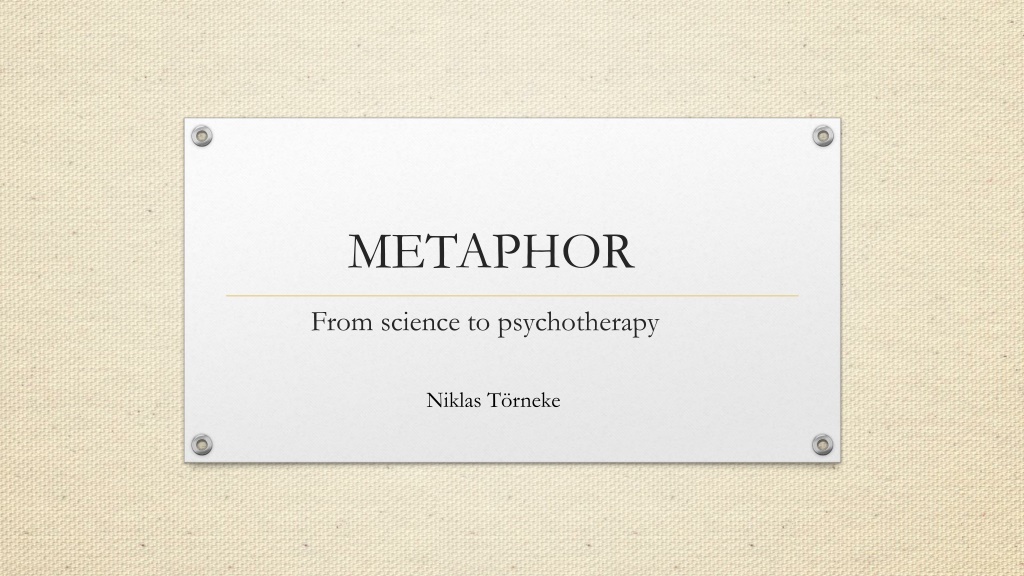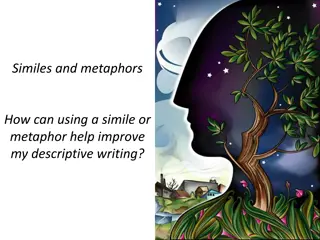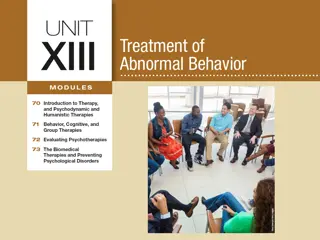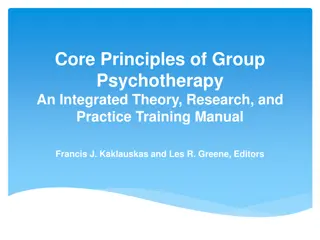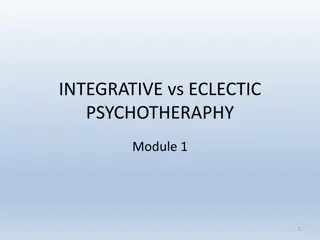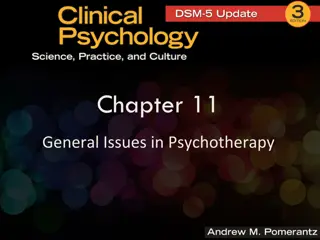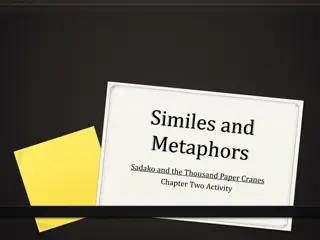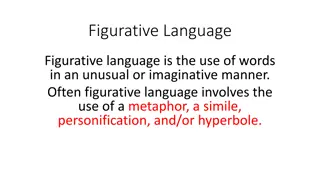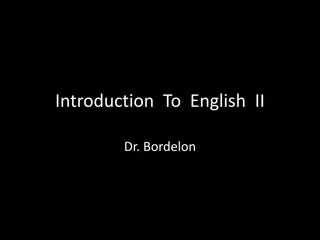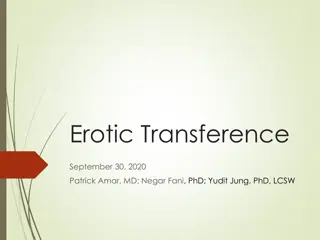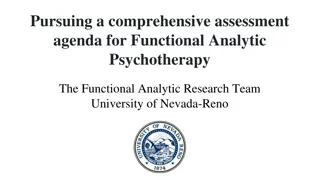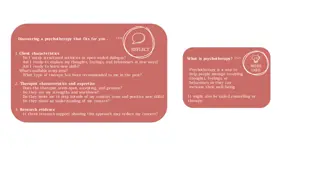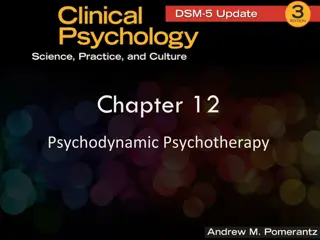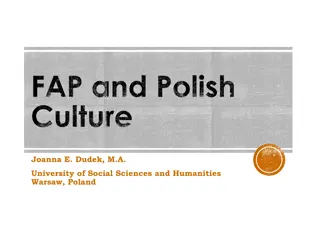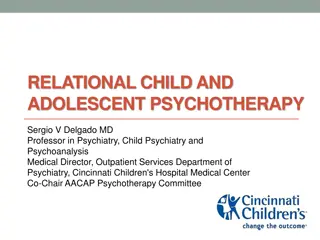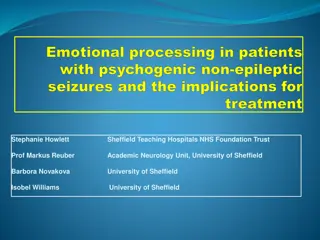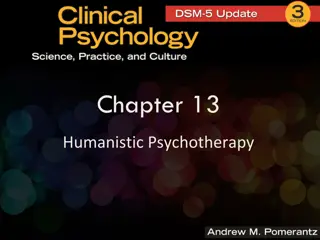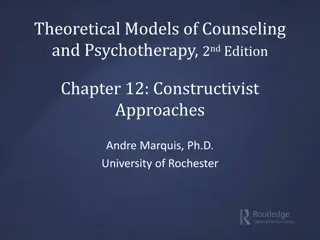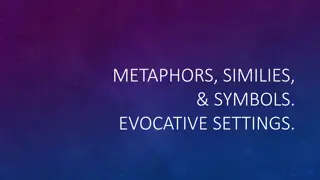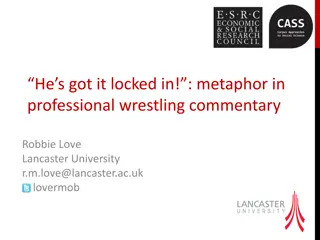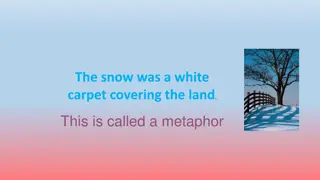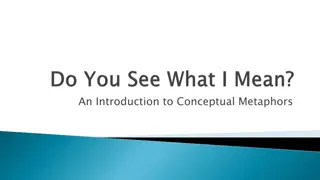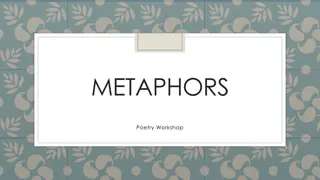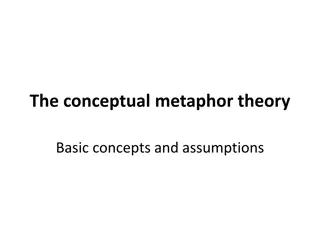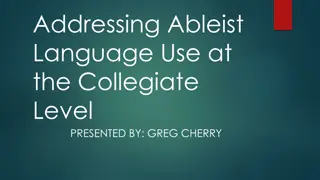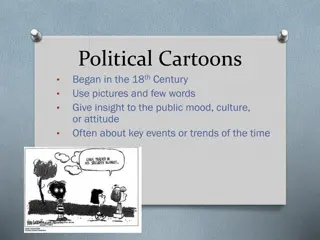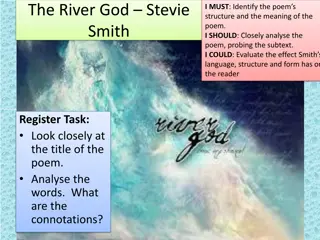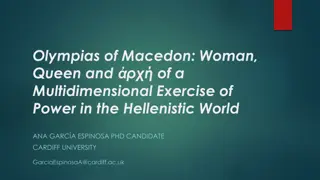Unveiling the Power of Metaphors in Psychotherapy
Explore the significance of metaphors in psychotherapy, tracing their roots from Aristotle's definition to modern linguistic insights. Delve into conceptual metaphors and their impact on language, cognition, and therapy practices.
Download Presentation

Please find below an Image/Link to download the presentation.
The content on the website is provided AS IS for your information and personal use only. It may not be sold, licensed, or shared on other websites without obtaining consent from the author. Download presentation by click this link. If you encounter any issues during the download, it is possible that the publisher has removed the file from their server.
E N D
Presentation Transcript
METAPHOR From science to psychotherapy Niklas T rneke
The structure of this talk What is metaphor? Metaphor in modern linguistics An relational frame theory analysis of metaphor Clinical research Clinical guidelines for using metaphor
Background and general points on metaphor in psychotherapy Almost everybody agrees about it s importance Limited research, especially in the CBT tradition Some research from psychodynamic and emotion-processing assumptions Lots of research in linguistics and cognitive science about metaphor in general
Definition Aristotle (384-322 BC), in Poetics: Metaphor consists in giving the thing a name that belongs to something else
Basic terminology Giving the thing (target) a name that belongs to something else (source) Source (vehicle, base): Better known, more concrete Target (topic): Less known, more abstract
Traditional view Literal language is basic Metaphorical talk is an extra Traditional use: poetry and rhetorical talk
The Lakoff-Johnson revolution Metaphors we live by (1980) Metaphors are not an extra , they are at the very root of language and cognition Conceptual metaphors, inbedded in all cognition and language A bit like cognitive structures, cognitive schema
Conceptual metaphors Argument is war ( Your position is totally indefensible ; His argument was easy to shoot down ; She kept attacking my views ) Life is a game ( The odds are against me ; If I play my cards right ; She drew the short straw ) Ideas are objects ( Bring that to our next meeting ; Will you please drop that? ) Ideas are food ( I find that hard to swallow ; It was something to get my teeth into ) Ideas are goods ( You ll have to try to sell him that ; Your idea is completely worthless ) Theories are buildings ( It was a theory built on sand ; That s where your theory falls to the ground ) Anger is pressure in a container ( He was bursting with anger ; I exploded with anger ; She could not contain her rage ) The mind is a machine ( He s got a screw loose ; I feel totally rusty ; That got the old cogs working ) Influence is a physical force ( I couldn t resist the pressure ; That really made an impact on me )
Recent linguistic critique of the theory of conceptual metaphors Using a metaphor is always an act in context. Focusing on conceptual metaphors (rather than actual metaphor use) has the risk of missing this obvious fact. We need to analyze metaphors in the context in which they are used. Cornelia M ller (2008) Metaphors dead and alive, sleeping and waking. A dynamic view Steen, G. J. (2011) The contemporary theory of metaphor now new and improved. Review of Cognitive Linguistics, 9:1, 26-64
The town of Addison Lera Boroditsky Crime is like a beast, versus crime is like a virus Solutions of law enforcement (police force, penalties), versus investigating the underlying cause of the problem (economy, education) Thibodeau, P. H. & Boroditsky, L. (2013). Natural language metaphors covertly influence reasoning. PLoS ONE 8(1): e52961. doi:10.1371/journal.pone.005296
Relational frame theory: the behavior of relating is at the root of language and cognition Relating phenomena (stimuli, events, objects) under the control of arbitrary contextual cues Metaphor: relating relations
Peter and Louise are like night and day Peter Night Same as (coordination) Dissimilarity Dissimilarity Louise Day Target Source Niklas T rneke 14
Peter and Louise are like two peas in a pod Peter Pea Same as (coordination) Similarity Similarity Louise Pea TargetSource Niklas T rneke 15
Peter and Louise are like cats and dogs Peter Cats Same as (coordination) Relation of conflict Relation of conflict Louise Dogs Target Source Niklas T rneke 16
My thinking is a machine My thoughts Machine Same as (coordination) Relation of distance Relation of distance Me Me Target Source Niklas T rneke 17
Conclusions from clinical research The amount of metaphors used does not seem to be a significant aspect of successful therapeutic dialogue If a metaphor is generated by the therapist or patient does not seem to predict if the metaphor will be helpful or not. The degree of collaboration between therapist and patient in the use of a particular metaphor seems to correlate with successful therapy. Problems of research
Research on metaphor use: the way forward One way to begin thinking about what a contextual approach would entail is to start not with a focus on metaphors, per se, but rather on events of clinical interest (Linda McMullen 2008. Putting it in context: Metaphor and psychotherapy. In R. W. Gibbs (red.), The Cambridge handbook of metaphor and thought (p. 397 411). p. 408).)
Clinical events of interest: Psychological flexibility
What is psychological flexibility? Psychological flexibility is a behavioral repertoire and it s essence is about how we interact with our own behavior (how we respond to our own responding) Why important? Because once humans can relate under the control of arbitrary contextual cues (symbolic generalization) our own responding will be an important part of the context influencing the following behavior of the same individual. RFT for clinical practice: Three core strategies in understanding and treating human suffering. T rneke, Luciano, Barnes-Holmes & Bond (2016). In Zettle, Hayes, Barnes-Holmes & Biglan (ed.), Wiley handbook of contextual behavioral science (p. 254 272)
How to train psychological flexibility Help the patient discern the relationship between what he does and the problematic consequences he experiences. Help the patient discern his own responding (including thoughts, emotions and physical sensations) by establishing observational distance to them as they emerge. Help the patient use this skill to clarify what is important in his life and what would be concrete steps in that direction.
How to use metaphor in therapy as part of training psychological flexibility
Different ways of using metaphors in treatment Introduce metaphors guided by the three strategies for training psychological flexibility Catch metaphors used by the client, guided by the same three principles Co-create and develop metaphors together with the client, guided by the same three principles
You simply parked To refrain from what you really want to do To enter a parking place Causal relation Same as (coordination) Causal relation The travel is brought to a halt, no further progress No further progress Target Source Niklas T rneke 26
RFT for Clinical Use: The Example of Metaphor. Foody, Barnes-Holmes, Barnes-Holmes, T rneke, Luciano, Stewart & McEnteggart 2014. Journal of Contextual Behavioral Science, 3, 305 313. RFT for Clinical Practice: Three Core Strategies in Understanding and Treating Human Suffering. T rneke, Luciano, Barnes-Holmes & Bond 2016. In Zettle, Hayes, Barnes-Holmes & Biglan (ed.), Wiley handbook of contextual behavioral science p. 254 272 Metaphor. A Practical Introduction. K vecses, Z. 2010 Metaphor in Practice: A Professional s Guide to Using the Science of Language in Psychotherapy. T rneke, 2017.
Contact niklas.torneke@telia.com
